Celebrating Chinese New Year: Dogs in Ancient China
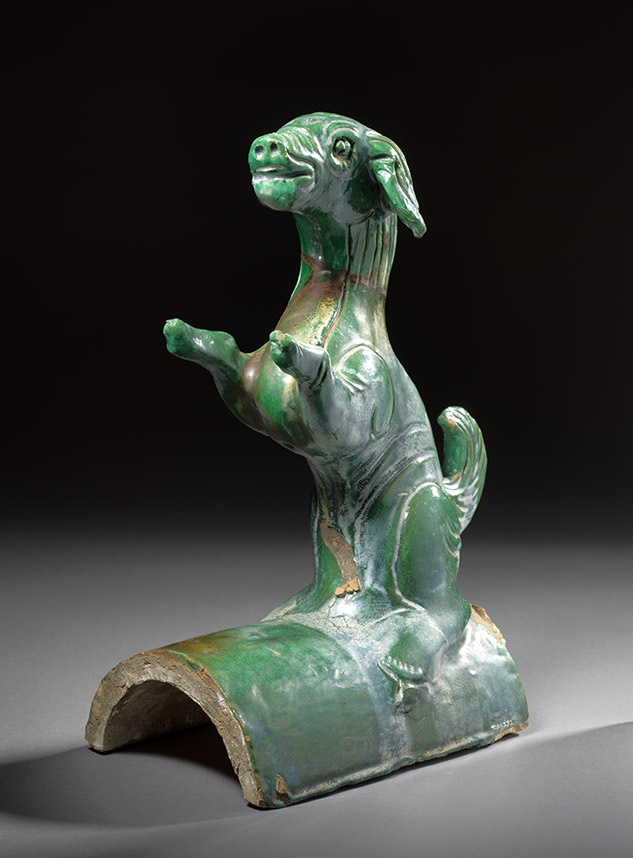
Ridge tile with a dog
Moulded earthenware, glaze
Ming-Qing Dynasty (17th-19th century)
921.1.232
The George Crofts Collection
By Kara Ma
February 16th, 2018 marks the beginning of the Year of the Dog, the eleventh animal in the Chinese zodiac. In the traditional Chinese calendar, each year bears an animal zodiac symbol. People born in a specific year are thought to have attributes of that year’s animal.
While there are many fables told throughout Chinese history on how these animals came to represent the twelve zodiacs, the exact origin of them is difficult to trace. Most commonly, the twelve animal zodiacs have been mentioned in Chinese astrology and their connection with the Chinese calendar used to tell time.
Not only are dogs a man’s best friend, but they are also the oldest domesticated animal in ancient China. Confirmed archaeological evidences suggest the earliest domesticated dog in China dates to approximately 9000 years ago. Dogs have been bred for many purposes including guarding, herding, and hunting.
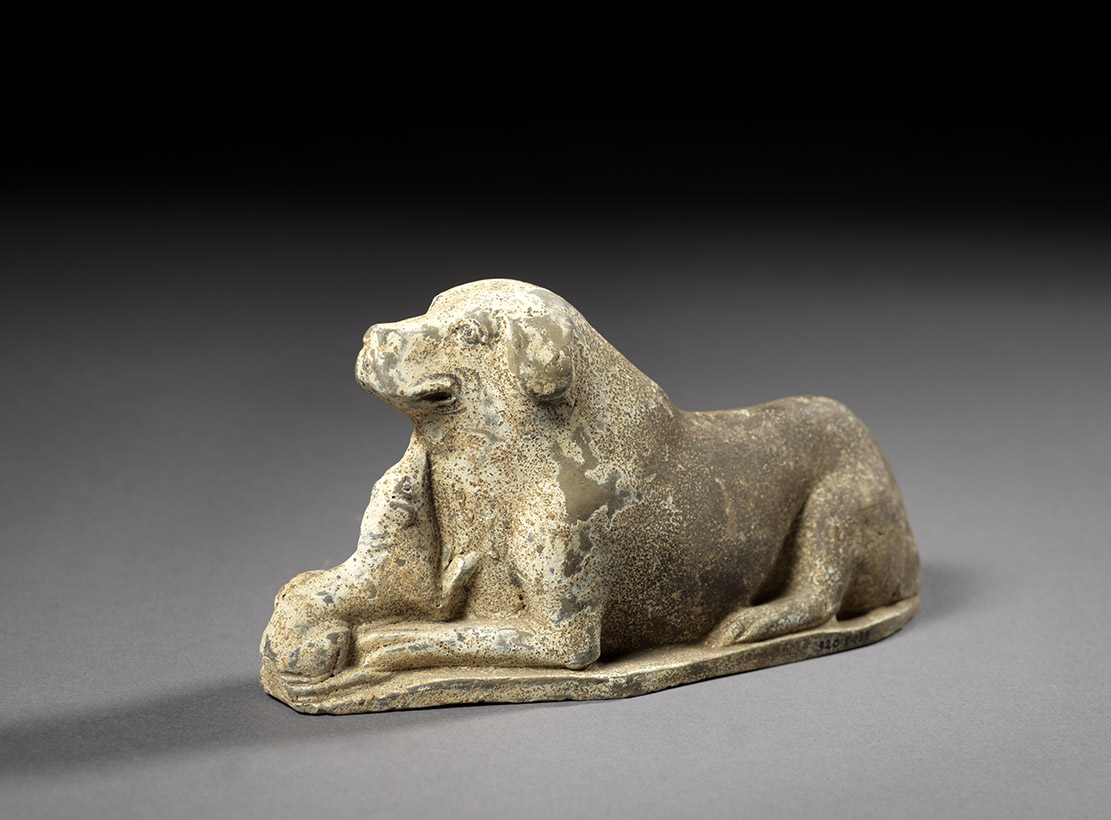
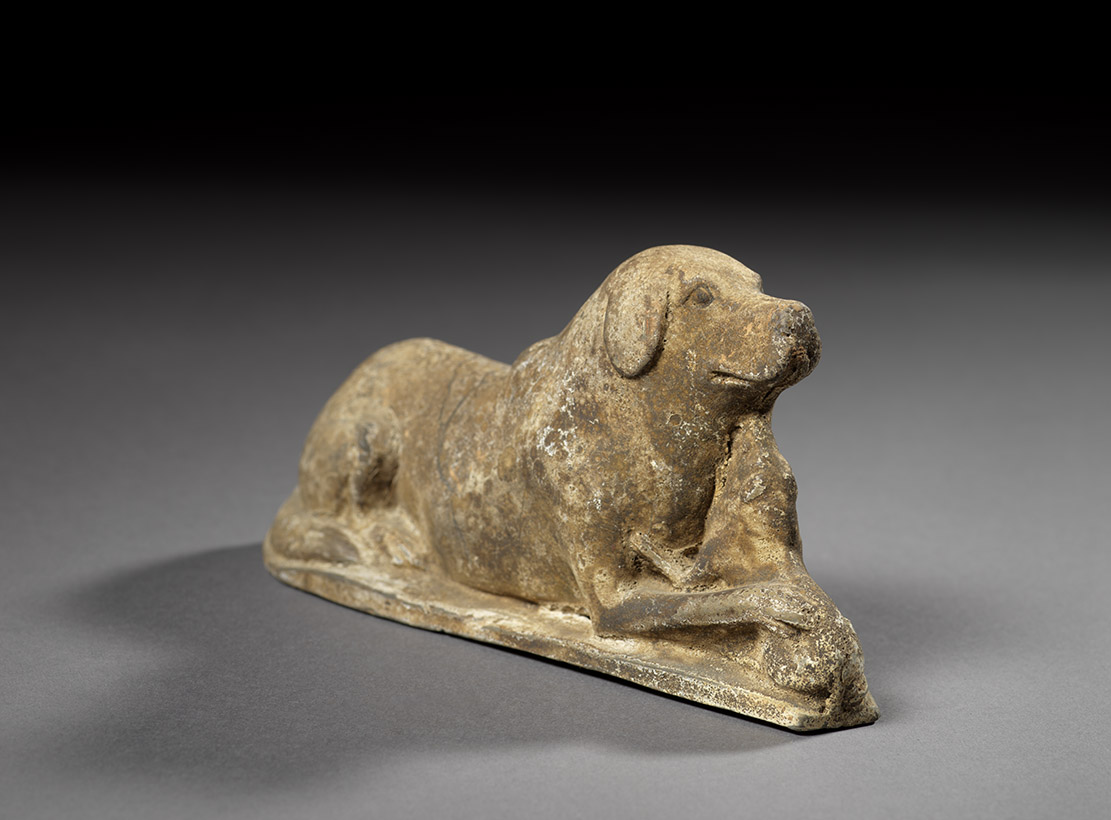
A pair of burial dog figures with puppy
Northern Wei (early 6th century)
920.5.138 and 920.5.139
The George Crofts Collection
References to the dog can also be found as inscriptions on oracle bones - various animal bones once used for pyromacy (not dogs), dating to the Shang dynasty (1766-1050 B.C.). The inscriptions mention the ‘rite of ning’ (寧), which used dogs as sacrificial victims. There were also other rites in which dogs were sacrificed to ward off evil or to please the gods.
Dogs, along with other domesticated animals, were a great source of protein for people in ancient China. Dog meat was considered a delicacy and only the emperor and lords were able to taste it. During the autumn months, the emperor would eat dog meat as it was thought to reduce fatigue.
The dog is also a figure commonly used in pottery for burial goods in ancient China. Models of houses, tools, and furniture were also popular. As human and animal sacrifices declined during the Han dynasty (206 BC - AD 220), funerary goods reached their peak, where pottery figures of humans and animals were placed in the tombs with the deceased to accompany them in their afterlife.
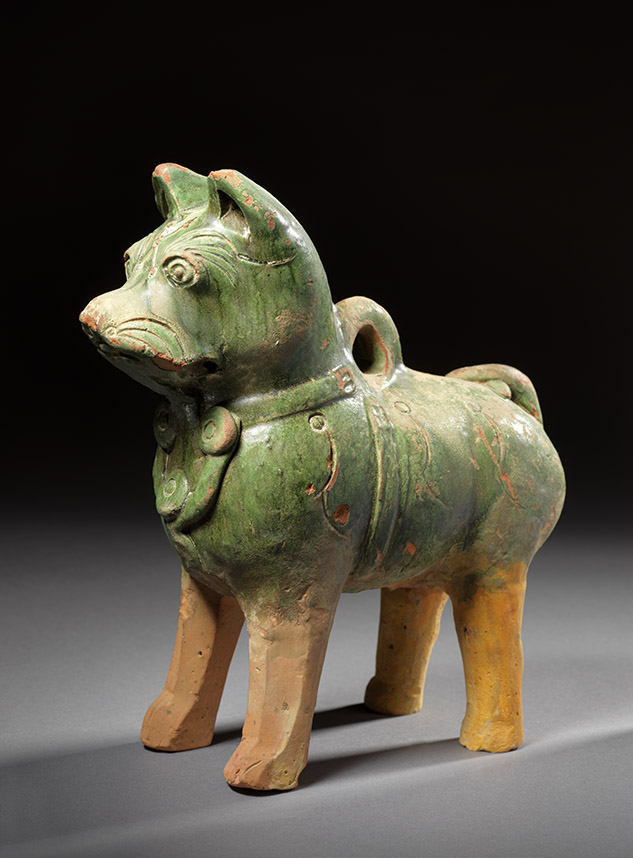
Burial figure of a dog
Moulded earthenware hand-made components glaze
Eastern Han Dynasty (late 2nd-early 3rd century)
918.21.45
The George Crofts Collection
Originally bred in China, the Pekingese was a popular lapdog, particularly for the royal family. In the Forbidden City, royal dogs received special treatment. They reportedly lived in pavilions with marble floors, sleeping on silk cushions, tended by specialized eunuchs who worked for the Dog Raising Office. Court ladies in particular entertained themselves by walking, playing with, and dressing up their dogs. Empress Dowager Cixi was known to own dozens, making gifts of puppies adorned with silk leashes and harnesses.
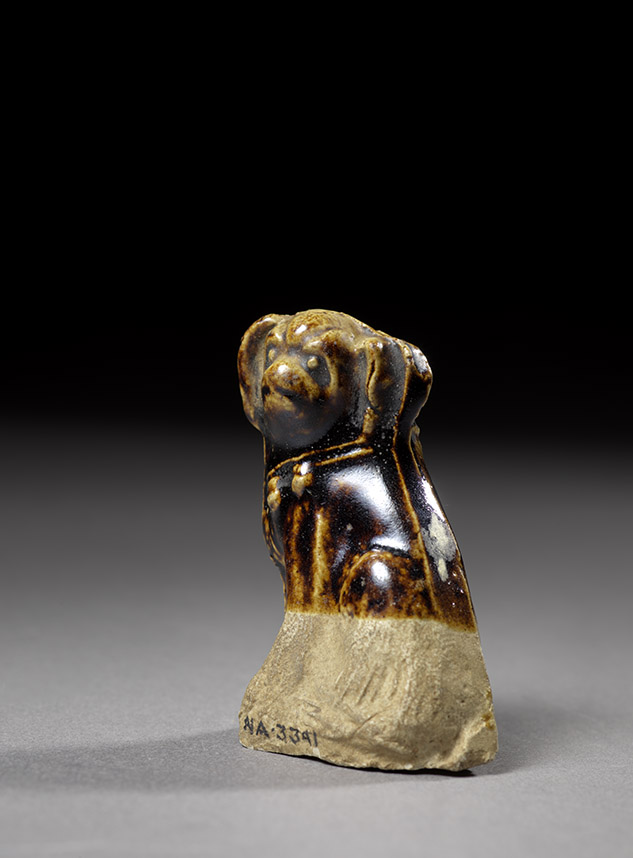
Whistle in form of Pekingese dog
Moulded stoneware, glaze
Northern Song-Jin Dynasty (11th-12th century)
918.7.53
The George Crofts Collection
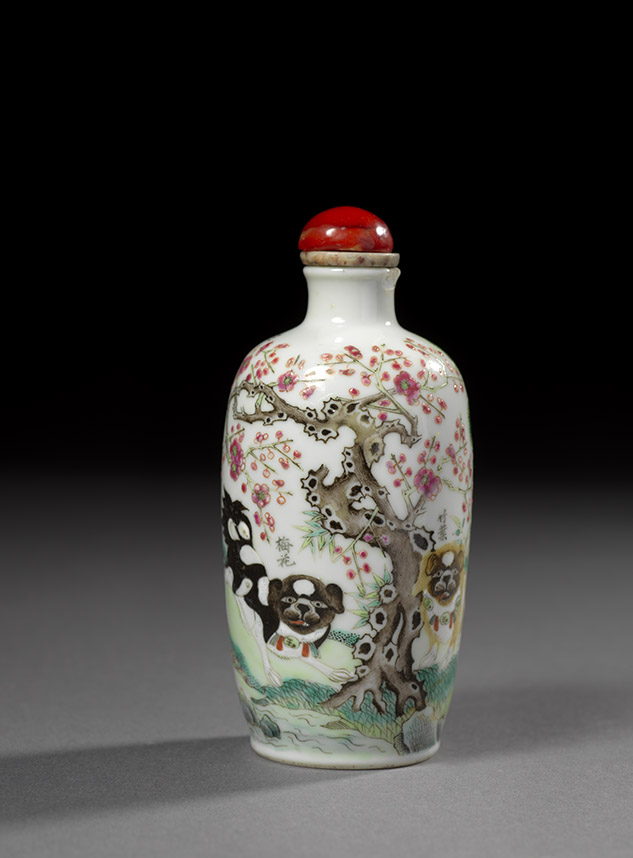
Snuff bottle
Moulded porcelain, glaze, enamel paints; glass, bone
Qing Dynasty, Guangxu Period (Dated 1891)
922.20.352
The George Crofts Collection
To celebrate the Year of the Dog, a special exhibition presents a selection of exquisite objects from the ROM’s Chinese collection. Please visit the Joey and Toby Tanenbaum Gallery of China on Level 1 and see if you can spot any other dog related objects that are displayed throughout the gallery!
